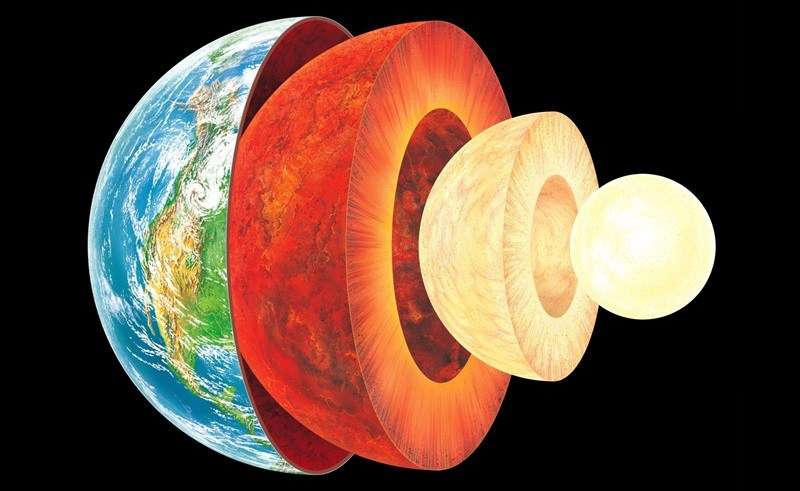The earth’s interior structure is divided into three layers: crust, mantle, and core. The crust is the earth’s outermost layer, and the core is the earth’s innermost layer, located at a depth of 2900 kilometers. This article provides a brief overview of the earth’s three interior layers structure.

The Crust
- The crust is the earth’s outermost solid layer.
- It is fragile.
- The thickness of the crust varies depending on whether it is oceanic or continental.
- The oceanic crust is thinner than the continental crust.
- The continental crust is thicker where major mountain systems exist.
- The crust is composed of heavier rocks with densities of 3 g/cm3.
- Basalt is the type of rock found in the oceanic crust.
- The average density of material in the oceanic crust is 2.7 g/cm3.
- The main constituent minerals are silica (Si) and aluminum (Al). As a result, it is often referred to as SIAL. In addition, SIAL is sometimes used to refer to the Lithosphere.
The Mantle
- The mantle is the portion of the interior that extends beyond the crust.
- It is solid.
- It is denser than the crust portion.
- The mantle occupies nearly 84% of the earth’s volume and 67% of its mass.
- The layer has a higher density than the crust, ranging from 3.3 to 5.4g/cm3.
- The thickness varies between 10 and 200 km.
- From Moho’s discontinuity, the mantle is 2,900 kilometers deep.
- The asthenosphere is the uppermost layer of the Mantle.
- It is the primary source of magma that reaches the surface during volcanic eruptions.
- The lithosphere is the crust and the uppermost part of the mantle.
- Because silicon and magnesium are major constituent elements of the mantle, it is also known as SIMA.
- Mesosphere refers to the portion of the mantle that lies just below the lithosphere and asthenosphere but above the core.
The Core
- The core-mantle boundary is located at a depth of 2,900 kilometers.
- The inner core has a solid state, whereas the outer core has a liquid state.
- The core is made of extremely heavy material, primarily nickel and iron. As a result, it is also known as the “nife” layer.
- The core accounts for nearly 15% of the earth’s volume and 32.5% of its mass.
- The core is the earth’s densest layer, with a density ranging from 9.5 to 14.5g/cm3.
- The Lehmann Discontinuity is the separation between the upper and lower cores.
Other related articles:
“Western Disturbances and its impact on the Indian weather system”



